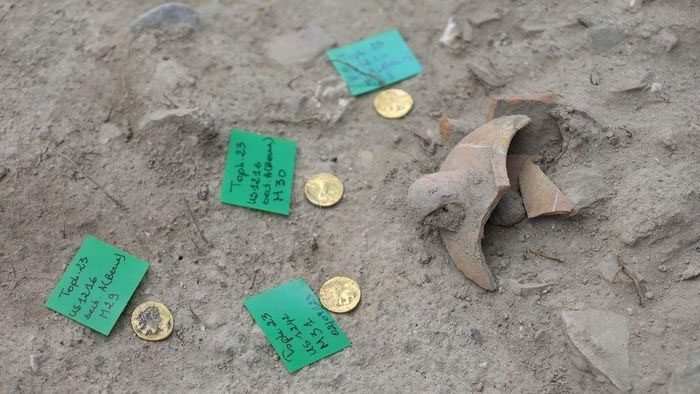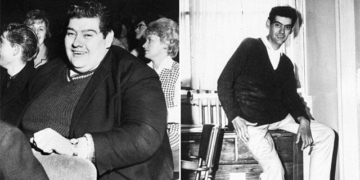Archaeologists in Tunisia have uncovered rare 2,300-year-old gold coins and jars containing the bones of animals, infants, and premature babies from the ancient city of Carthage.
The researchers discovered graves and five gold coins near the ruins of the Tafat El Bony temple, situated on a hill in the outskirts of Tunis. The temple was once a monument in the rural area dedicated to the gods Baal Hammon and Tanit, the Tunisian Ministry of Culture stated in a Facebook announcement.

The gold coins excavated from a temple in ancient Carthage depict the goddess Tanit and may have been left by affluent worshippers along with burial items as offerings to the deities.
Carthage was a powerful state founded by the Phoenicians—a people from the eastern Mediterranean coast, also known as the Levant—in the ninth century B.C. The city flourished in the sixth century B.C. and developed into a major trading empire with influence over much of the Mediterranean basin.
Carthage and the Roman Republic became fierce rivals and fought in the Punic Wars from 264 B.C. to 146 B.C., which ended with the Romans destroying the North African city. A new Roman Carthage was built on the ruins, and the remains of both cities are now listed as a UNESCO World Heritage Site.
According to Tunisia’s Shems FM television, the newly discovered gold coins measure just under 2.5 cm in diameter and depict the ancient goddess Tanit—symbolizing fertility and motherhood for the Carthaginians.
A representative from the Ministry of Culture stated that these coins are a rare find, reflecting the richness of that historical period and affirming the cultural value of Carthage.
Child Sacrifice Tradition?
Archaeologists suggest that wealthy Carthaginians may have left these coins as gifts for the gods, but it remains unclear whether the buried children were sacrificed or died from natural causes. Over the past century, excavations in Carthage have uncovered thousands of tombstones and jars containing the remains of infants and children under four years old, which some experts believe could be sacrificial offerings.
Josephine Crawley Quinn, a professor of ancient history at the University of Oxford in the UK, stated in a 2014 announcement: “The archaeological, literary, and documentary evidence regarding child sacrifice is overwhelming. Perhaps it was due to deep religious devotion, or the sacrifice could bring good fortune to the family or community.”
Christian biblical passages describe the child sacrifices to the god Baal Hammon of the Carthaginians, and Greek and Roman stories recount bloody scenes of infant killings. However, detailed examinations of remains found in a suspected sacrificial area indicate it was a regular cemetery for infants and fetuses.
Some experts believe that the jars and graves discovered in Carthage over the past century are remnants of burials for children who died from natural causes.
Patricia Smith, a biological anthropologist and emeritus professor at the Hebrew University of Jerusalem, stated: “The Carthaginians were seafarers. They needed wood for shipbuilding, fabric, or tools. Therefore, it is possible that the Carthaginians used wood resources to cremated infants as a sacrificial ritual.”


















































